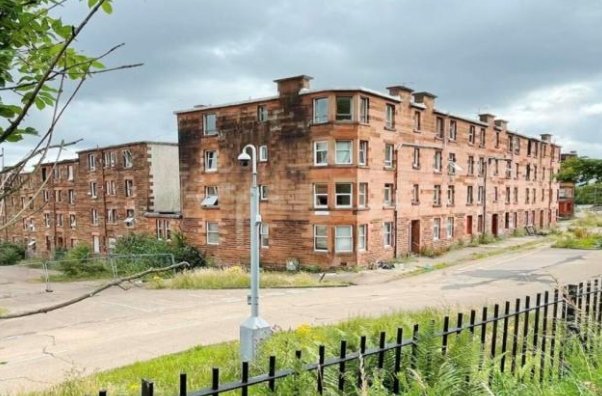The Clune Park estate in Port Glasgow, often referred to as “Scotland’s Chernobyl,” is set for demolition after nearly three decades of abandonment. Inverclyde Council has issued dangerous building notices for 138 properties, marking the beginning of the end for this derelict area. Once a thriving community, Clune Park has become a symbol of urban decay and neglect. The demolition will include residential flats, a school, and a church, aiming to eliminate the hazards posed by these crumbling structures and pave the way for future redevelopment.
A Long-Awaited Decision
The decision to demolish Clune Park has been a long time coming. For years, the estate has been a blight on the landscape of Port Glasgow, with its empty, decaying buildings attracting anti-social behavior and posing significant safety risks. The council’s move to issue dangerous building notices is a crucial step towards addressing these issues. The notices were served on 138 properties across 15 tenement blocks, with no appeals received, allowing the council to proceed with the demolition.
Residents and local authorities have expressed relief at the decision. The estate, which once housed a vibrant community, has been largely abandoned since the late 1990s. The few remaining residents have faced numerous challenges, including unsafe living conditions and a lack of basic services. The demolition is seen as a necessary measure to ensure public safety and to begin the process of regenerating the area.

The council has been proactive in acquiring properties within the estate, now owning over half of the buildings. This has facilitated the demolition process, as the council can directly manage the removal of these dangerous structures. The first phase of demolition will focus on the most hazardous buildings, including the former school and church.
The Decline of Clune Park
Clune Park’s decline began in the late 20th century, as economic changes and population shifts led to a decrease in occupancy and maintenance. By the early 2000s, the estate was largely abandoned, with only a handful of residents remaining. The buildings, once a testament to the area’s industrial past, fell into disrepair, becoming a magnet for vandalism and arson.
The estate’s nickname, “Scotland’s Chernobyl,” reflects its state of decay and the sense of abandonment that has pervaded the area for decades. The derelict buildings have been a stark reminder of the challenges faced by post-industrial communities in Scotland and beyond. Efforts to regenerate the area have been hampered by the sheer scale of the problem and the complexities involved in dealing with multiple property owners.
Despite these challenges, there have been ongoing efforts to address the issues at Clune Park. The council has worked with external surveyors and building standards teams to assess the condition of the properties and to develop a plan for their safe demolition. This has involved extensive checks and consultations, ensuring that the demolition process is carried out in a controlled and safe manner.
Looking to the Future
The demolition of Clune Park marks the beginning of a new chapter for Port Glasgow. While the removal of these dangerous buildings is a significant milestone, it also opens up opportunities for redevelopment and regeneration. The council has expressed its commitment to working with the community to create a vision for the future of the area, one that reflects the needs and aspirations of local residents.
There are hopes that the demolition will pave the way for new housing and community facilities, helping to revitalize the area and attract new residents. The council’s proactive approach to acquiring properties and managing the demolition process has been crucial in laying the groundwork for these future developments. The focus now shifts to planning and implementing a regeneration strategy that will bring lasting benefits to the community.
The story of Clune Park is a reminder of the challenges and opportunities that come with urban regeneration. While the demolition of the estate is a necessary step, it is also an opportunity to reflect on the lessons learned and to ensure that future developments are sustainable and inclusive. The council’s efforts to engage with the community and to plan for the future are key to ensuring that the legacy of Clune Park is one of renewal and hope


















